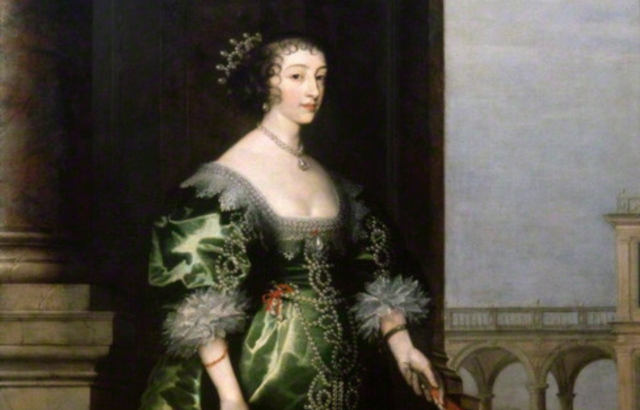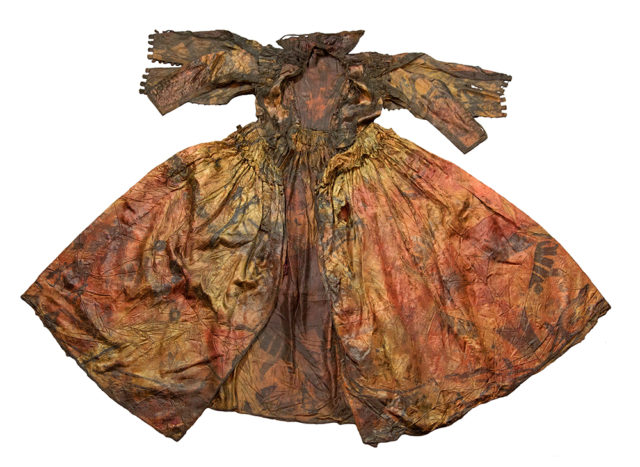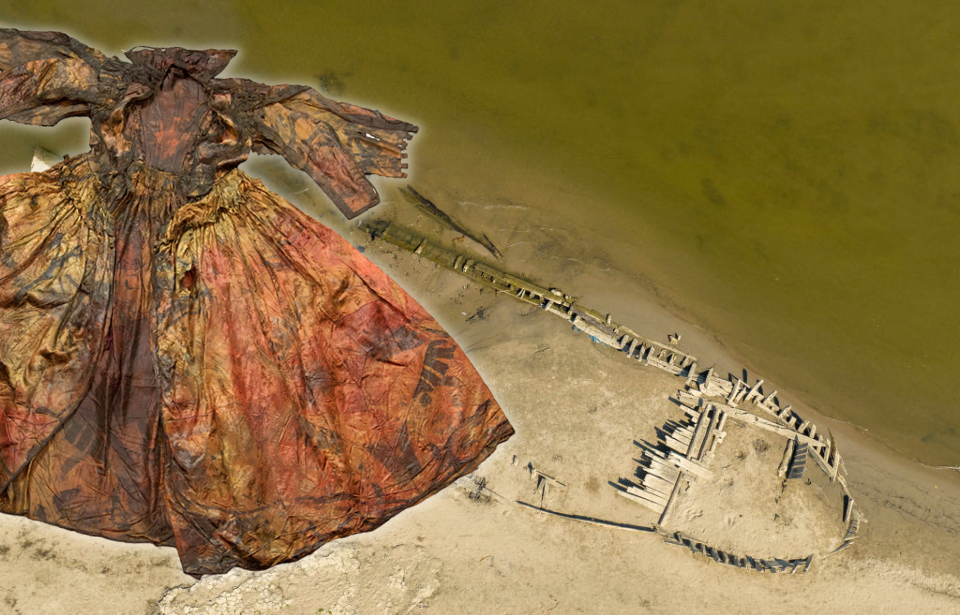After it spent nearly 350 years underwater, historians unearthed a treasure trove of 17th-century artifacts seemingly frozen in time aboard the “Palmwood wreck.” Among the ship’s cargo were several remarkably preserved gowns, which reveal the tastes and daily lives of some of the richest women of the era.
Researchers are still debating the exact date of the Palmwood sinking, but one fact they can agree on is that these artifacts hold countless secrets about the lives of England’s most privileged and esteemed women.
How did the Palmwood wreck happen?

First found in 2009 in the Wadden Sea, off the coast of the Netherlands, the Palmwood wreck is thought to have sunk in 1660. Historians believe the ship was part of a convoy carrying Henrietta Maria, the wife of King Charles I, from England to the Netherlands.
One letter from the 17th century detailed how a baggage ship containing the clothing of two of Henrietta’s ladies-in-waiting had sunk in March 1642. The story goes that the vessel sank during an unsuccessful mission to secretly sell the Crown Jewels during the English Civil War. The silk damask gown found among the wreckage was connected to the Countess of Roxburghe Jean Kerr, one of Queen Henrietta’s ladies-in-waiting.
Despite the letter, which claims the ship sank in 1642, researchers believe the vessel likely didn’t even set sail until after 1645. Analysis of the wood used in the ship’s construction revealed the trees used to build the Palmwood weren’t felled before 1640. Given all the different variables, historians think the vessel first set sail between 1645-60.
What has been found?

The wreck has yielded an astonishing 1,500 artifacts, from clothing to leather-bound books. The hand-embroidered dress and the silk damask gown are thought to be some of the most important clothing discoveries in Europe. An Ottoman-style tunic or kaftan dyed red using cochineal insects – an incredibly rare source of pigment at the time – was also found alongside a lady’s toilet set and mirror.
While the gowns likely belonged to women, the kaftan has baffled experts, since it probably wasn’t worn by a female. Even more mysterious is the lack of undergarments, such petticoats, corsets and socks. It’s also hard to tell what’s been lost to long periods underwater.
The wreck itself appeared seemingly out of nowhere, in an area known for its biodiversity and constant change. The ship was also found in a location that was popular with traders and seafarers, where hundreds of vessels would drop anchor. If a storm came, these ships could find themselves at the bottom of the ocean, just like the Palmwood wreck.
Finding the clothing was a remarkable discovery
Meyvaert wins Innovator of the Year award for unique museum display caseshttps://t.co/FKCZXQdbBF#FlandersNewsService #Belga #Culture #Art #PalmwoodWreck #MuseumKaapSkil #TexelMuseumFoundation pic.twitter.com/2RsveZLwMN
— Belga News Agency_English (@Belga_English) May 12, 2023
Corina Hordijk, the artistic director of the Museum Kaap Skil, where the artifacts are on display, has seen an influx of visitors who want to simply view the centuries-old clothing pieces for themselves.
“The thought that this dress was on the bottom of the sea for centuries is insane,” she told The New York Times. “The last person who touched it before this was probably the person who wore it.” Many visitors are mesmerized by that same thought, adding to the mystery and value of the pieces.
The characteristics of the silk damask gown suggest it belonged to someone of extremely high status, with Arnold van Bruggen, the director of an upcoming documentary about the Palmwood wreck, explaining, “These dresses were incredibly expensive. These dresses would not have been seen outside of royal court circles.”
It’s a surprise, then, to hear that Hans Djiker, one of the amateur divers involved in the finding of the extraordinary gown, had no idea just how important this find was to the historical understanding of 17th-century European people. After it was brought to the surface, he said, “It just hung on a hanger in our clubhouse.”
What’s next for the Palmwood wreck?
Museum Kaap Skil on the Dutch island of Texel, situated in the Waddenzee, unveiled a second dress from the 17th-century Palmhout shipwreck: the 'Silver Dress', a 17th-century dress with woven silver plates. Recent research indicates that it is most likely a wedding dress. pic.twitter.com/rQrhqxMIVw
— Ticia Verveer (@ticiaverveer) November 12, 2022
Of the 1,500 items recovered from the wreck since 2014, very few have been properly examined. However, the remarkable clothing items were some of the first to be studied and preserved for generations to come.
Currently on display at the Museum Kaap Skil in the Netherlands, the clothes and other luxury items, like silver tableware and books dating as far back as a century prior to the sinking, could suggest, as some scholars believe, that the artifacts came from a powerful English family traveling to a diplomatic posting.
The sheer cost of the silk gowns and impressive kaftan highlights that whoever they belonged to was rich and powerful, revealing the lavish lifestyle of the wealthiest in Europe’s high society. More everyday objects have also been found, such as a wooden lice comb, which proves even the most elite men and women in society weren’t immune to common grievances.
